Every time I visit Hendricks County, Indiana, I discover more interesting people and fascinating places. On our trip this this past spring, I discovered glass artist Lisa Pelo and her gorgeous art works. My husband and I visited Lisa’s Hot Blown Glass studio, watched her create an art piece and chatted with her about her glass art business.
A little about Lisa
While Lisa was working on a writing degree at Bowling Green State University in Ohio, she signed up for a class in glass art because she needed some credits. She got hooked and changed her focus and earned her BFA with a specialty in glass. After working out of other shops for a while, Lisa built her Hot Blown Glass studio, where she creates glass art. She also offers classes and group glassblowing workshops and rents space to experienced glassblowers.
On the day we visited Hot Blown Glass, Lisa demonstrated her art with the assistance of fellow glassblower, Clayton.
A Hot Blown Glass Demo
Clayton described the glassblowing process as we watched Lisa transform a glob of molten glass into a work of art. Glassblowing involves some blowing, but it’s mostly turning and shaping, with frequent trips to the 2,000-plus degree furnace to ensure the piece doesn’t cool too quickly and crack. In fact, Clayton quipped that the art “should be called ‘glass turning’ instead of ‘glassblowing’ because you don’t blow that much, but you’re always turning. You never stop turning. If you do [stop turning], the whole thing will get off center, and then you’ll ruin it.”
I was surprised that Lisa used folded up wet newspaper to shape her piece, and she used it barehanded. I thought the heat from the glass would go right through the newspaper. However, Clayton assured me that the newspaper, completely saturated in water, doesn’t burn through.
Other shaping tools include wood paddles for flattening the piece and large tweezers that Lisa used to stretch the top of the vessel. As one of the final steps, Lisa added glass flowers that she had pre-made to the front of the piece.
When she finished the piece, Lisa placed it into a cooling oven, where she would keep it for about twelve hours. The cooling oven slowly brings the piece down to room temperature, a critical step in glassblowing.
Clayton also demonstrated making a drinking glass. He used two layers of clear glass, then rolled it in colored frit to give it a gold luster. After firing the glass again, Clayton shaped it in a metal mold. Lisa explained that since Clayton’s glass was so thin, it needed to be heated in the furnace more often, since the thin glass cools so quickly.
Handmade equipment
Following the demonstrations, we chatted with Lisa and Clayton about the equipment they used. We were surprised to learn that they make most of their own equipment, including the furnace. Lisa learned basic equipment making as part of her education. She also learned metal forming while working on a farm and learned more when she worked at another studio that built their own equipment. A fellow glassblower, who is also an engineer, and Clayton, an experienced mechanic, worked with Lisa to build the furnace.
A furnace lasts only two to three years since it runs 24 hours a day, 7 days a week, at over 2,000 degrees. Buying a new furnace at $20,000 or more every couple of years can be cost prohibitive.
Of course, safety is the biggest factor with the gas-fired equipment. Lisa explained all the safety measures in place to ensure the equipment runs safely. For example, the gas supply automatically shuts off if there is any variation in power, air pressure or gas pressure. However, the furnace can’t be down for too long because the change in temperature can cause it to crack.
One of our biggest takeaways from our visit to Hot Blown Glass is that glassblowers not only need to know their craft; they need to intricately know their equipment, as well.
Visiting Hot Blown Glass
Hot Blown Glass is located in Clayton, Indiana, about 28 miles west of Indianapolis. Lisa welcomes visitors to the studio, whether to view/purchase items or to take a sample lesson, by appointment only. Visit the Hot Blown Glass website for exact location and further information.
You can also purchase Lisa’s glass art at studios listed here.
Accommodations: Hendricks County offers more than 1600 hotel rooms, plus bed-and-breakfast accommodations. Compare hotel compare rates on TripAdvisor in Avon, Brownsburg, Danville, and Plainfield.
**********
Disclosures: Our visit to Hendricks County was hosted by Visit Hendricks County.
This article contains affiliate links, which means that if you book a room through the TripAdvisor links above, I will receive a small commission, at no additional cost to you.
Thank you for reading Midwest Wanderer. Don’t miss a post. Enter your e-mail address below and clickSubscribe to be notified whenever I publish another post. Subscription is FREE. After subscribing, be sure to click the link when you get the e-mail asking you to confirm. – Connie

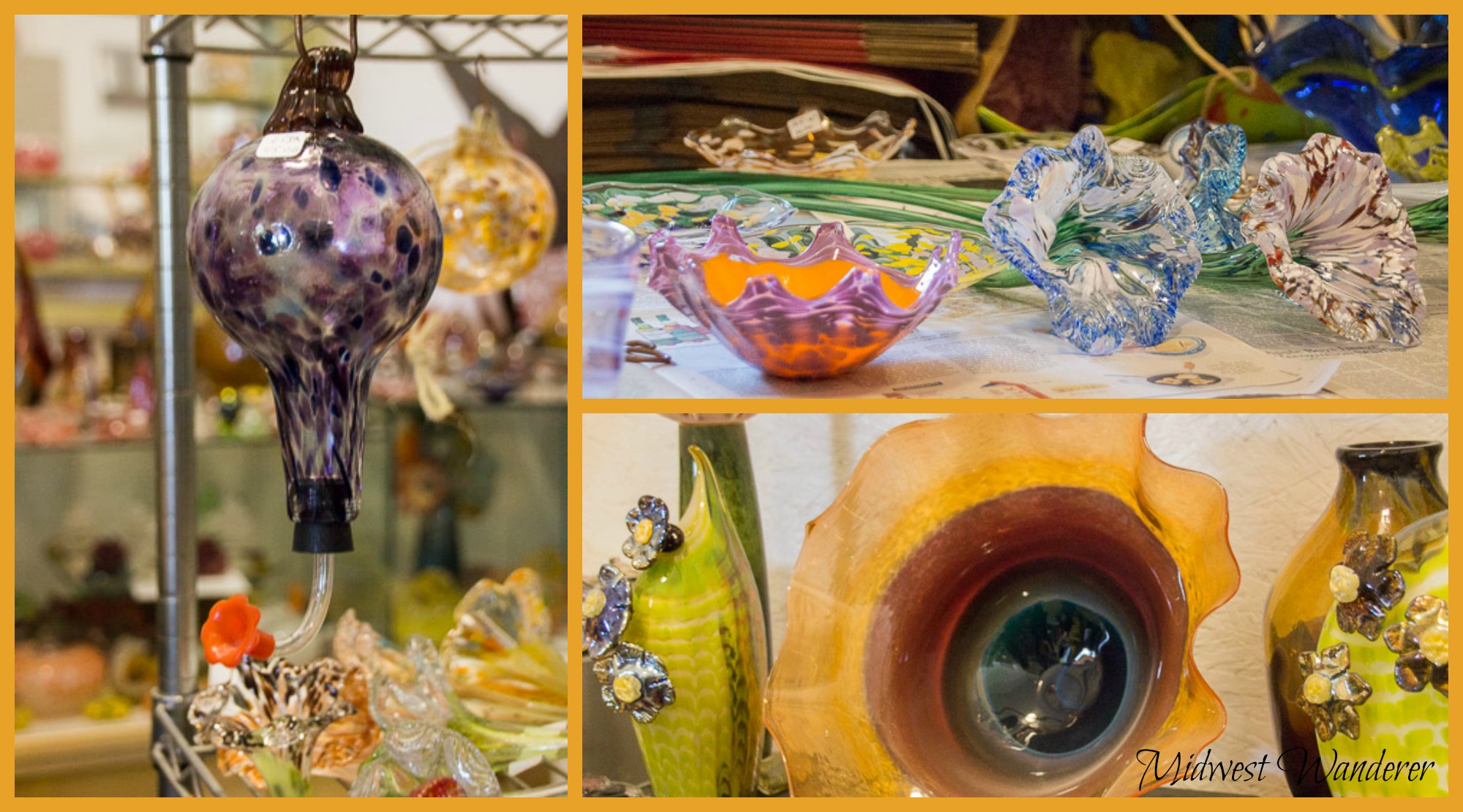
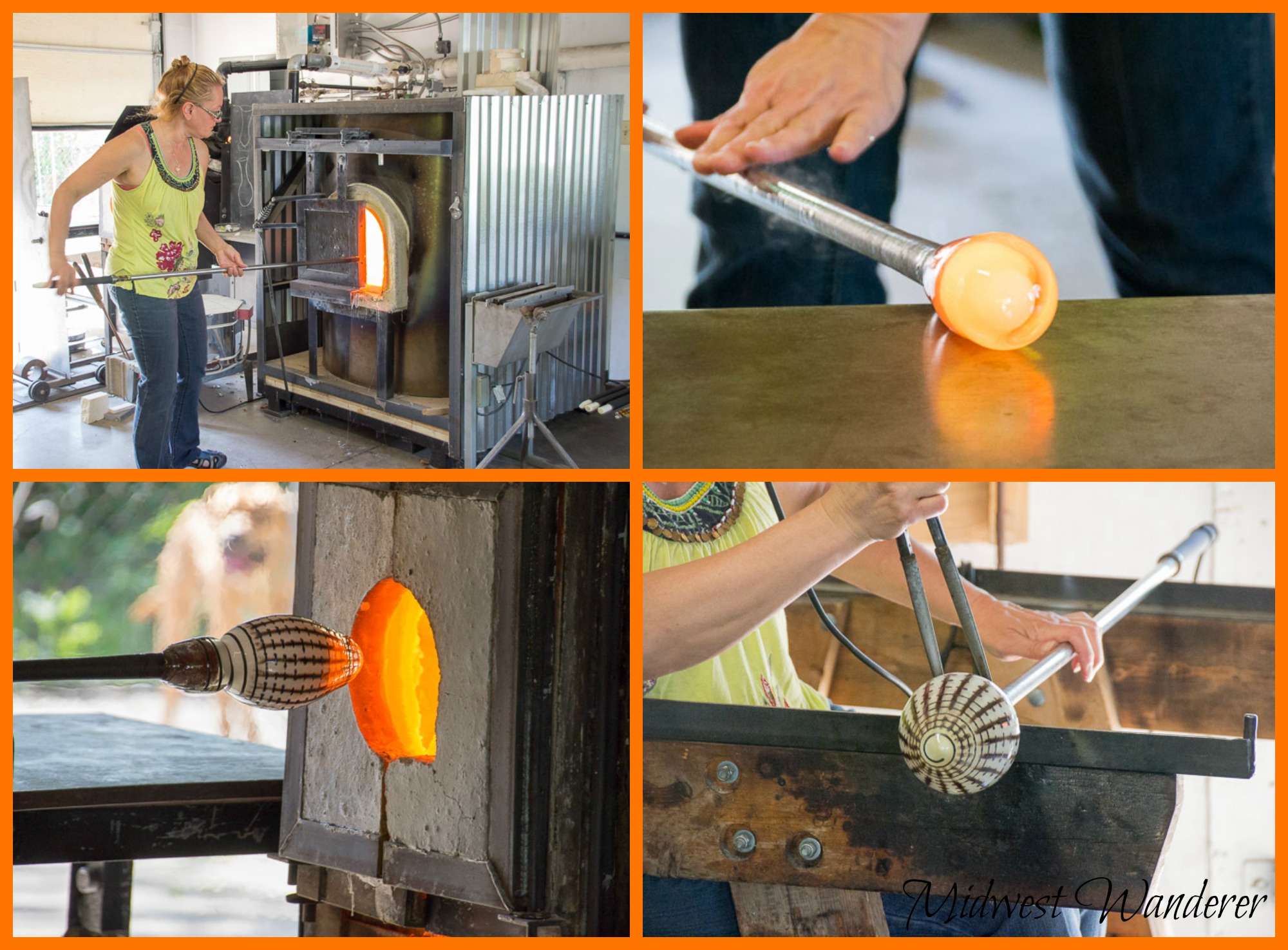
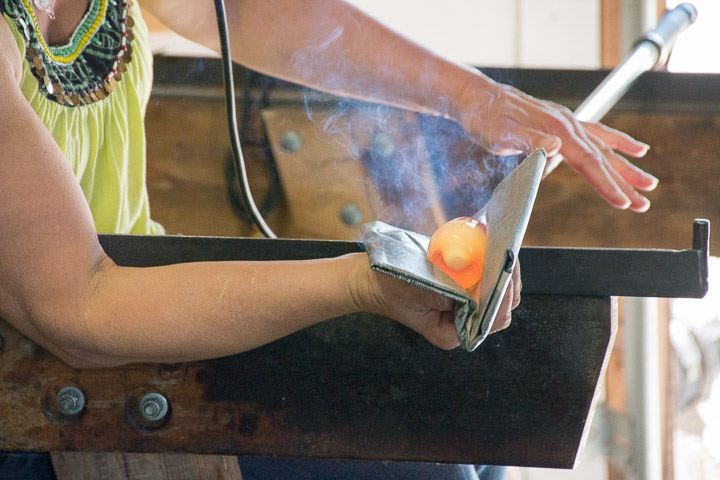
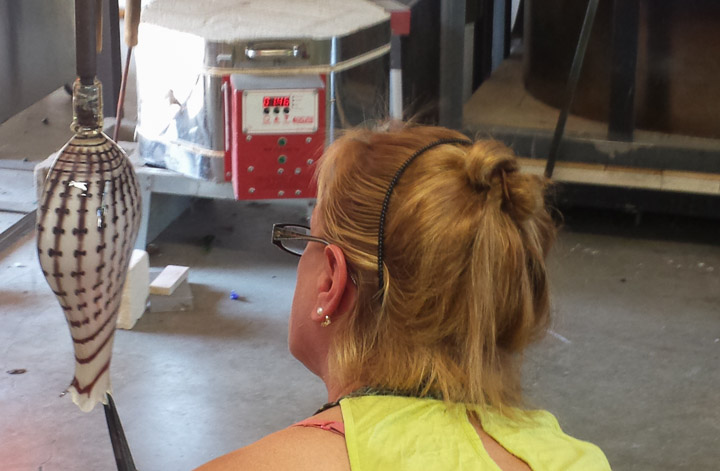
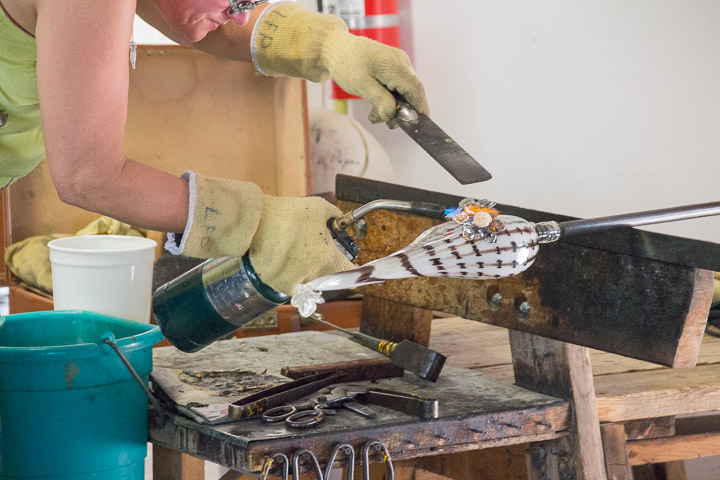
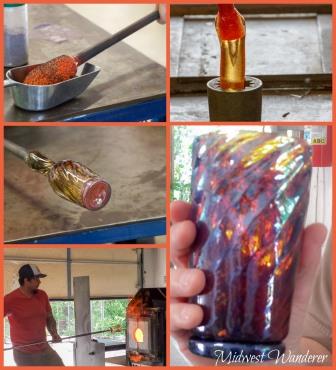
I had the opportunity about a year ago to do this and it was so much fun. You are right, it’s all about safety. The end result is so worth it. I was surprised at how different it looked before it went into a freezer for 24 hours. The colors looked different (not what I had chosen) and 24 hours later- the colors were all there.